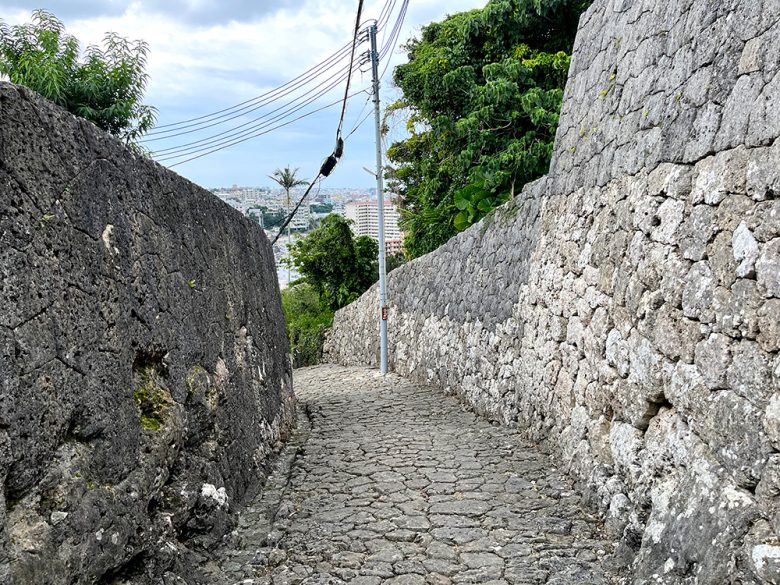tourism 2023.12.03
Shuri Kinjo Town Stone Paved Road, a historical road from the Ryukyu Kingdom era

Writer
Hiboko
Now that my children have flown the nest, my husband and I are planning to live in various countries and live like the wind...but first, I want to study English!
Cobblestone road leading to Shuri Castle
Shuri Kinjo-cho cobblestone road is part of the Madamamichi road, which was built in the 16th century during the Ryukyu Kingdom era as the main road leading from Shuri Castle to Naha Port and the southern part of the main island.
Located on a slope in Shuri Kinjo-cho, located in a quiet residential area 500m away from Shuri Castle, the cobblestone road, which is approximately 4m wide and paved with Ryukyu limestone, continues for 238m, and has been designated as a designated cultural property by Okinawa Prefecture.


Escaped the war and remains today
Shinjumichi was originally a 4km long road that continued to Matamabashi Bridge over the Kokuba River, with a total length of 10km, but most of it was destroyed during the Battle of Okinawa in World War II. Shuri Kinjo Town is an area that miraculously escaped the war, and the stone pavement surrounding private houses on both sides of the road still remains. The houses along the cobblestone streets are still occupied by normal people, so please be respectful and avoid making noise.

A resting place halfway up the slope where you can see the banyan tree
The slope is steep and difficult to walk on as there are gaps between the stones, and it can also be slippery when wet from the rain, so you need to be careful where you step. Please don’t forget to wear comfortable walking shoes and bring a towel to wipe your sweat. As you go up the steep slope, you will be greeted by a large banyan tree. Beyond that is Shuri Kinjo Muraya, a traditional Ryukyu wooden building.
This is open from 9am to 6pm, and there are restrooms and vending machines, so we recommend using it as a rest area to recover your physical strength.
Next to the building is the “Kinjo Ohi River,” an old communal well.




Large Akagi in Kinjo Town, Shuri
If you go further up the hill from Shuri Kinjo Muraya, turn right and follow the road, you will find a place called “Uchikinjo Prison”. It is a sacred place called Utaki, which is said to be the place where the gods descend. There are six large Akagi (bishop wood) trees, which are sacred trees, and are approximately 15 meters tall and estimated to be 300 years old, and have been designated as national natural monuments. The large Akagi that remains here is said to be a divine tree that survived the war. There is a solemn atmosphere in the silence, and you can feel the energy of the sacred tree. This is a place you should definitely visit from the cobblestone streets.



Access to cobblestones
Unfortunately, there is no dedicated parking lot as Shuri Kinjo-cho cobblestone road is a sidewalk. There are many sightseeing spots in the surrounding area, such as the Shuri Castle Ruins, which is registered as a World Heritage Site, Shureimon Gate, and Tamaudun Mausoleum, so we recommend that you take a stroll while visiting. There is also a bus stop near Ishidatami Iriguchi, so it might be a good idea to take a leisurely bus trip.

A bus came just as I was filming.

There are information boards and English explanation boards everywhere.


A mincer-patterned manhole that blends into the Shuri townscape
The Minsa pattern is a pattern of the Minsa weaving that has been passed down in Okinawa since the Ryukyu Dynasty. The pattern consists of five and four patterns, and it has the meaning of “happily everlasting…”. It is also believed that Minsa weaving has the power to act as a talisman to protect loved ones, and it is said that Minsa weaving was sent to loved ones
How about taking a leisurely stroll while feeling the history?








